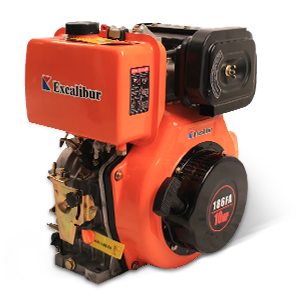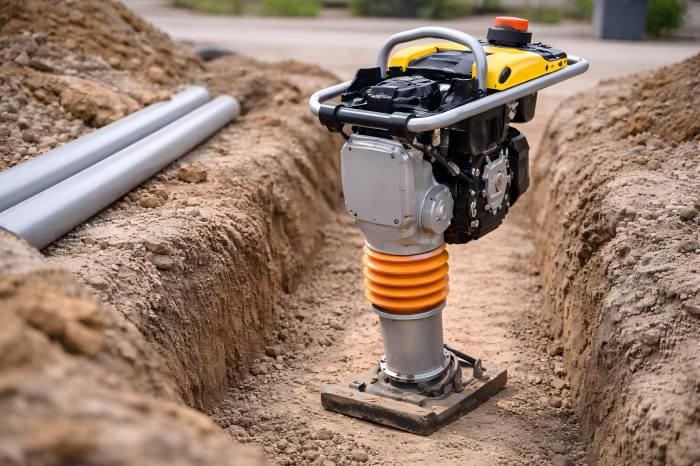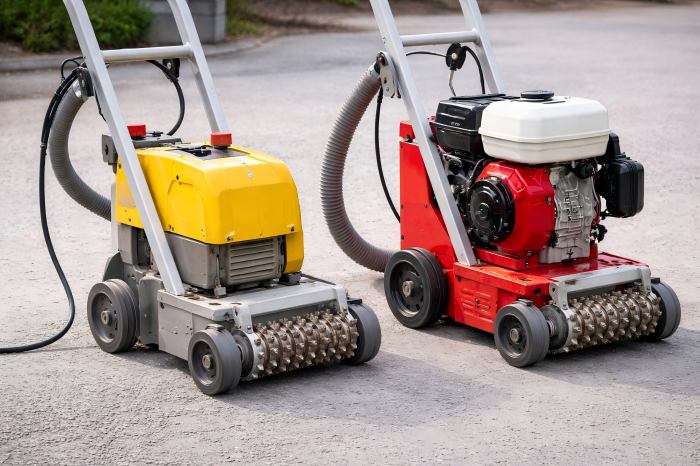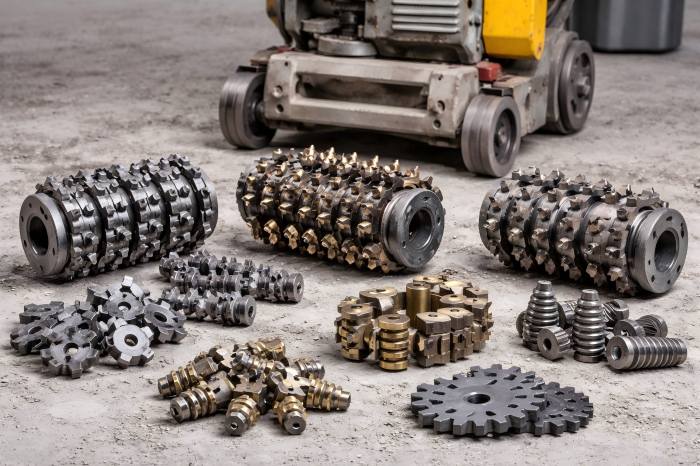Portable concrete mixers are a game-changer for small to medium-sized construction sites, offering the convenience of mixing concrete on-demand, anywhere. Whether you’re building a patio, laying a foundation, or working on a remote project, a portable mixer ensures you have fresh, consistent concrete ready when you need it.
However, like any piece of construction equipment, improper use can lead to wasted materials, substandard concrete quality, higher costs, and even safety hazards. Many users—especially beginners—make preventable errors that undermine both the performance of the mixer and the quality of the finished structure.
Incorrect Mixing Ratios
One of the most frequent mistakes is using the wrong ratio of cement, sand, gravel, and water. The strength, durability, and workability of concrete rely on maintaining accurate mix proportions.
Why This Is a Problem
- Too much water: Makes the concrete weak and prone to cracking, as it reduces the bonding strength between cement and aggregates.
- Too little water: Results in a stiff mix that’s difficult to pour and finish, leading to poor compaction and voids.
- Incorrect cement-to-aggregate ratio: Can either make the mix too weak or unnecessarily expensive.
Example:
If the intended mix design calls for a 1:2:4 ratio (cement:sand:gravel) and you accidentally add too much sand, the resulting mix will have reduced compressive strength, compromising the structure’s load-bearing capacity.
How to Avoid It
- Always adhere to the specified mix design suited for your particular project.
- Use a measuring container or weigh ingredients when possible, rather than estimating by eye.
- Follow the manufacturer’s instructions or comply with local building codes to ensure the correct mix ratios.
Pro Tip:
- Mark buckets or containers with fill lines for each ingredient to speed up consistent batching on-site.
Overloading the Mixer
Portable concrete mixers come in various drum sizes, often ranging from 60 liters to 200 liters. Overloading the mixer is a common rookie mistake that can damage the machine and result in poorly mixed concrete.
Why This Is a Problem
Overfilled drums don’t allow enough space for proper tumbling and mixing.
The motor can overheat or suffer mechanical stress, leading to premature failure.
Concrete may spill over, wasting materials and creating a messy—and potentially hazardous—worksite.
Example:
A 120-liter mixer might only handle about 90 liters of actual mix at a time to allow for proper rotation. Overstuffing it to the brim will not only make mixing inefficient but can also stall the motor.
How to Avoid It
- Know your mixer’s maximum batch capacity and stick to it.
- If you need more concrete, mix in smaller batches rather than pushing the machine to its limit.
- Keep an eye on how the drum rotates—if the mix isn’t tumbling freely, it’s too full.
Pro Tip:
- As a general rule, fill the drum to about two-thirds of its total volume for optimal mixing efficiency.
Neglecting Cleaning and Maintenance
Failing to clean the mixer after each use is one of the fastest ways to shorten its lifespan and compromise performance.
Why This Is a Problem
Dried concrete buildup inside the drum reduces mixing capacity and efficiency.
Hardened deposits can flake off and contaminate future batches.
Excess buildup increases wear on the motor and moving parts.
Example:
A small contractor who skips cleaning for a week may find the drum interior lined with hardened concrete. Removing it often requires chipping away with hammers or chisels, which can damage the drum’s interior.
How to Avoid It
- Rinse the drum right after each batch or once the day’s work is done.
- Pour water and a handful of gravel into the drum, then run the mixer for a few minutes to break up residue.
- Periodically inspect and lubricate bearings, gears, and the motor as per manufacturer guidelines.
Pro Tip:
- Keep a dedicated cleaning kit—including a stiff brush, scraper, and bucket—near the mixer so cleaning becomes a routine step.

Using the Wrong Mixing Time
Even with the right materials, both undermixing and overmixing can negatively affect concrete quality.
Why This Is a Problem
Undermixing: Ingredients aren’t fully blended, leading to uneven distribution of cement paste and aggregates. This can cause weak spots and inconsistent strength.
Overmixing: Can cause segregation (heavier aggregates sinking to the bottom) and excessive water evaporation, reducing workability.
Example:
A small slab poured with undermixed concrete might show visible patches of dry cement or sand, which will weaken over time and cause surface defects.
How to Avoid It
- Follow standard mixing time guidelines: generally 3–5 minutes for most concrete mixes in a portable mixer.
- Watch the mix closely—once it shows an even color and texture, it’s ready.
- Avoid letting the mixer run unattended for long periods.
Pro Tip:
- Use a stopwatch during training to develop a consistent sense of mixing time for different batch sizes.
Ignoring Safety Protocols
While portable concrete mixers may seem less intimidating than large stationary mixers, they still pose serious safety risks if misused.
Why This Is a Problem
Risk of injury from moving parts, especially if clothing or tools get caught in the rotating drum or belt.
Electric mixers risk shocks in wet conditions without grounding.
Spilled concrete or tools left around the mixer can cause trip hazards.
Example:
An operator wearing loose-fitting gloves had them caught in the drum’s edge, causing a hand injury that required medical attention. This could have been avoided with proper PPE and cautious handling.
How to Avoid It
- Always wear appropriate PPE: gloves, safety glasses, hearing protection, and sturdy footwear.
- Maintain a clean, obstacle-free workspace for safe operation.
- Never attempt to clean or adjust the mixer while it’s running.
- For electric mixers, use a ground-fault circuit interrupter (GFCI) and keep cords away from water.
Pro Tip:
- Train all workers—even casual helpers—on safe mixer operation before starting work.
Putting It All Together: Best Practices for Efficient and Safe Mixing
By avoiding these five common mistakes, you’ll extend your portable concrete mixer’s lifespan, improve the quality of your concrete, and reduce project costs.
Here’s a quick checklist for smart mixing habits:
- Measure precisely – Stick to the correct ratios for your application.
- Load sensibly – Keep the drum at about two-thirds capacity.
- Clean daily – Remove all residue before it hardens.
- Mix just right – Aim for 3–5 minutes of consistent tumbling.
- Work safely – Follow PPE and operational guidelines at all times.
Real-World Scenario: How Avoiding Mistakes Saves Time and Money
A small renovation crew was tasked with replacing the concrete walkway of a residential property. On their first day, they:
- Overloaded the mixer, causing the motor to overheat.
- Eyeballed the cement-to-aggregate ratio, resulting in a batch that didn’t set correctly.
- Neglected to clean the mixer overnight, leading to hardened residue that took hours to remove.
After adopting best practices:
- They stuck to smaller batches and precise measurements.
- The quality of the concrete improved, requiring less repair work.
- Cleanup took only minutes instead of hours, allowing them to pour more sections per day.
Result:
- The project finished two days earlier than scheduled, saving the client labor costs and improving the crew’s reputation.
Portable concrete mixers are invaluable for small construction sites, but their benefits can be lost if you fall into common usage mistakes. Incorrect mixing ratios, overloading, poor cleaning habits, improper mixing times, and unsafe practices can all lead to wasted time, wasted money, and compromised results.
By following the guidelines above, you’ll not only protect your investment in the mixer but also ensure that every batch of concrete meets the required strength, consistency, and durability. In construction, precision and discipline pay off—not just in the quality of the structure, but in the safety and efficiency of the entire project.





